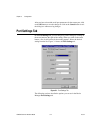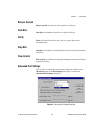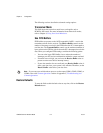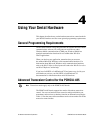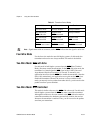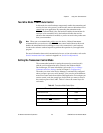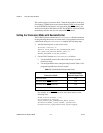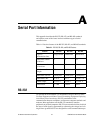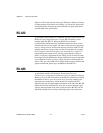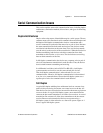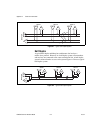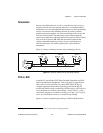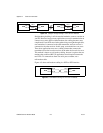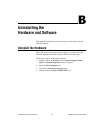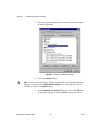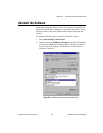
Appendix A Serial Port Information
PCMCIA Serial for Windows Me/9x A-2 ni.com
distances of 50 ft and with data rates up to 20 kbytes/s. However, because
of improvements in line drivers and cabling, you can usually increase the
actual performance of the bus past the limitations on speed and distance
recommended in the specification.
RS-422
As specified in the EIA/RS-422-A Standard, Electrical Characteristics of
Balanced Voltage Digital Interface Circuits, RS-422 defines a serial
interface much like RS-232. However, RS-422 uses balanced
(or differential) transmission lines. Balanced transmission lines use two
transmission lines for each signal. The state of each signal is represented,
not by a voltage level on one line referenced to ground as in RS-232, but
rather by the relative voltage of the two lines to each other. For example,
the TX signal is carried on two wires, wire A and wire B. A logical 1 is
represented by the voltage on line A being greater than the voltage on
line B. A logical 0 is represented by the voltage on line A being less than
the voltage on line B. Differential voltage transmission creates a signal that
is more immune to noise as well as voltage loss due to transmission line
effects. Thus, you can use RS-422 for longer distances (up to 4,000 ft) and
greater transmission speeds (up to 10 Mbytes/s) than RS-232.
RS-485
As specified in the EIA-485 Standard, Standard for Electrical
Characteristics of Generators and Receivers for Use in Balanced Digital
Multipoint Systems, RS-485 expands on the RS-422 standard by increasing
the number of devices you can use from 10 to 32 and by working with
half-duplex bus architectures. Unlike the RS-422 standard, RS-485
addresses the issue of using multiple transmitters on the same line. RS-485
defines the electrical characteristics necessary to ensure adequate signal
voltages under maximum load, short-circuit protection. RS-485 can also
withstand multiple drivers driving conflicting signals at the same time.



